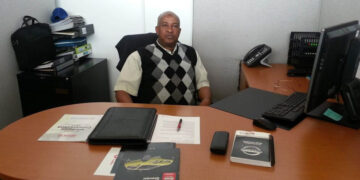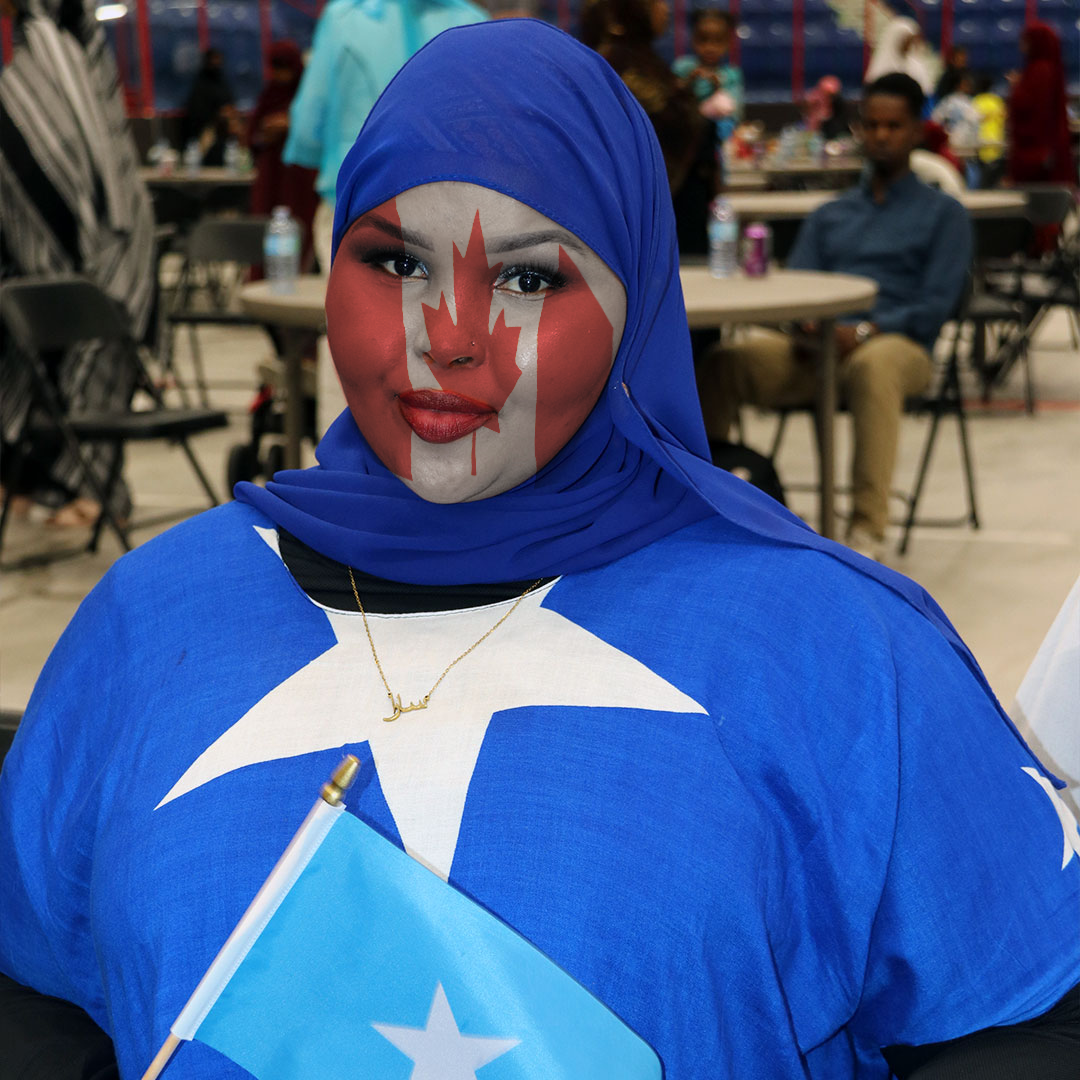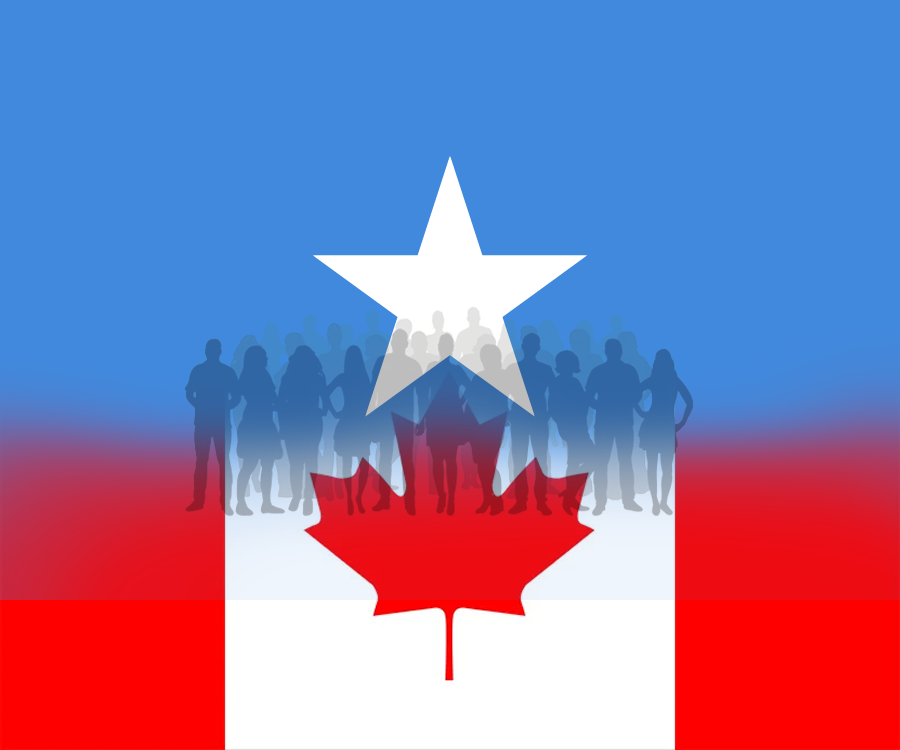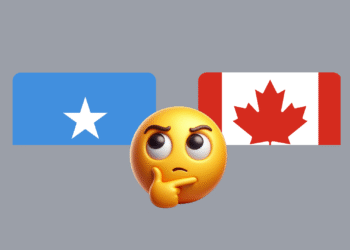Introduction
Do you remember the incident in 2017 when Google Translate mistakenly identified the phrase “Ooga Booga Wooga” as Somali? That viral mistake highlighted an ongoing challenge: machine translation tools can be useful, but they often miss cultural and linguistic nuances, especially in low-resource languages like Somali.
Fast-forward to 2025, and artificial intelligence has dramatically transformed the translation landscape. Tools like Google Translate, ChatGPT, and other neural machine translation systems are faster and more powerful than ever. They can provide instant drafts and help break down language barriers in everyday situations.
But when accuracy truly matters in legal documents, medical prescriptions, government forms, or business contracts, relying solely on AI or automatic translations can still lead to serious inaccuracies, misinterpretations, and cultural misunderstandings. Somali, in particular, is a language rich in poetry, proverbs, and layered meanings that machines cannot fully grasp.
This blog explores both the progress and limitations of AI in Somali-English translation. More importantly, it shows why human-driven translations remain essential for accuracy, cultural sensitivity, and clear communication between Somali and English speakers.
AI and Machine Translation: Progress and Pitfalls
When Google Translate first became popular, it offered a glimpse into the future of language technology. But as many Somali speakers quickly noticed, the tool often delivered clumsy or even comical results. The infamous 2017 incident, in which Google Translate incorrectly identified “Ooga Booga Wooga” as Somali, served as a reminder that automated translation systems can get things very wrong.
Since then, machine translation has undergone significant evolution. Advances in artificial intelligence and neural networks have enabled tools like Google Translate, DeepL, and conversational AI models, such as ChatGPT, to produce smoother and more natural translations. These systems are trained on massive datasets, which helps them recognize patterns, context, and even some cultural references.
For widely spoken languages such as English, French, or Spanish, AI translation can now be impressively accurate. For Somalia, progress has been slower. Somali is considered a low-resource language, meaning it lacks the large volumes of digitized text that AI systems need to learn effectively. This scarcity limits accuracy, especially when dealing with Somali’s oral traditions, poetic expressions, and words with multiple meanings.
One of the biggest challenges for AI translation is understanding context. Take the Somali word TOL as an example. Depending on usage, TOL can mean “clan” or “kinship group,” but as a verb it can also mean “to sew” or **“to stitch.” A human translator knows when TOL refers to family and when it refers to making clothing. AI, however, often struggles to distinguish between these meanings.
Consider this sentence:
Somali: “Dhibaatadii dhacday tolka ayaa ka fadhiistay.”
Literal AI Translation: “The problem that happened has been sat upon by the clan.”
When tested, Google Translate messes up. ChatGPT also attempted a direct translation with similar results. While the sentence makes grammatical sense, it misses the cultural depth.
In Somali, “tolka ayaa ka fadhiistay” is not about people simply sitting down. It implies that the clan gathered, deliberated, and often worked to resolve the issue. The phrase reflects Somali traditions of collective decision-making and conflict resolution.
This example shows how AI can capture the surface meaning but miss the cultural and social implications. A human translator recognizes that translation is more than words. It requires an understanding of history, traditions, and how language shapes community life.
| Somali Phrase | AI Translation | Human Translation |
| Dhibaatadii dhacday tolka ayaa ka fadhiistay | The problem that happened has been sat upon by the clan. | The clan gathered to deliberate and resolve the issue. |
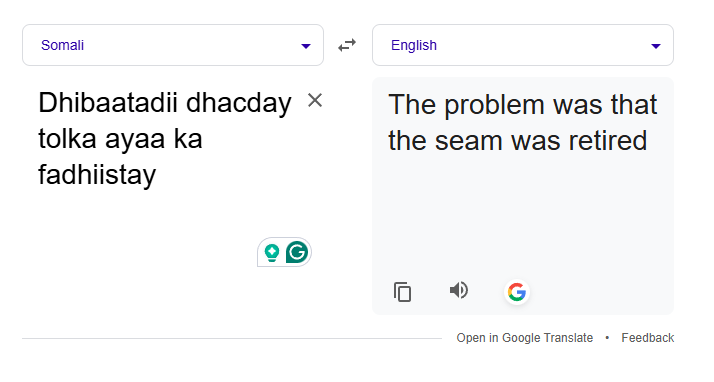
Unique Challenges of English-Somali Translations
Translating from English into Somali brings a different set of challenges. English is one of the most diverse languages in the world, with multiple dialects, regional variations, and a constantly evolving vocabulary. Choosing the right Somali words to capture these meanings requires more than language skills. It demands cultural knowledge and the ability to adapt expressions so they make sense to Somali speakers.
Based on my own experience as an interpreter in Canada, I often struggled with this exact issue. Coming from a journalism background, I frequently encountered English words and concepts that had no clear equivalent in Somali. The Somali language has not undergone formal updates for decades, resulting in gaps in areas such as technology, medicine, science, and even everyday conversation.
For example, modern terms such as “download,” “software update,” or “cancer” often lack widely accepted Somali translations. In practice, interpreters and translators sometimes rely on English, Arabic, or Italian words to fill these gaps, since Somali historically absorbed terms from those languages.
AI tools face the same barrier. While they can generate literal translations, they struggle with new concepts or specialized fields where Somali lacks standardized terms. A phrase like “cloud computing” may be translated word-for-word into Somali, but without context, it sounds confusing or meaningless to native speakers.
This is where human translators remain essential. A skilled Somali translator does not merely seek a literal match. They decide whether to adapt, borrow, or explain the term in a way that is accurate and culturally relevant. That judgment, which comes from lived experience and community understanding, is something AI still cannot replicate.
The Importance of Accurate Translations
Accuracy in translation is not just a matter of language; it is often a matter of safety, legality, and trust. In professional settings, such as healthcare, law, education, and business, even a minor mistake can have serious consequences. A mistranslated medical prescription could harm a patient. An error in a legal document could jeopardize someone’s case. A poorly translated contract could damage a business relationship.
For Somali-English translations, the stakes are even higher. Many Somali immigrants and refugees rely on translated documents to access essential services in English-speaking countries. When organizations depend on automated translation tools for these sensitive needs, they risk creating confusion, frustration, and in some cases, real harm.
AI systems can be useful for casual or everyday communication, but they do not yet meet the standards required for professional accuracy and reliability. This is where trained translators make a difference. Human experts ensure that the words chosen are not only correct but also culturally and legally appropriate. They consider tone, context, and meaning in ways that automated systems cannot replicate.
Organizations that prioritize accurate, human-driven translation benefit in several ways:
- They protect themselves against legal and financial risks
- They build trust and credibility with Somali clients and communities
- They foster stronger relationships by showing cultural respect
Need accurate Somali-English translation for legal, medical, or business use? Contact us today for professional, culturally sensitive translation services.
Ensuring Cultural Sensitivity
Language is never just about words, it is also about culture. For Somalis, religion and tradition are deeply woven into daily life. Most Somalis follow the Sunni branch of Islam and the Shafi’ite rite, and they carry a strong respect for faith, customs, and community even when living abroad. This cultural foundation shapes the way words, expressions, and even tone are used in communication.
When translating between Somali and English, missing these cultural cues can easily lead to misunderstanding. A literal translation may be grammatically correct, yet still feel offensive, inappropriate, or dismissive if it ignores cultural meaning. For example, proverbs, greetings, and references to faith often carry layers of respect and shared values that cannot be reduced to direct word-for-word equivalents.
Human translators bring this sensitivity to their work. They understand when a phrase requires a respectful adaptation rather than a literal translation. They know which cultural references need explanation for English speakers, and which ones must be preserved to maintain authenticity. This ability to balance accuracy with cultural awareness is essential for building trust and avoiding miscommunication.
For organizations, cultural sensitivity in translation is not just a courtesy. It is a way to foster stronger relationships, show respect to Somali clients and communities, and ensure that communication is effective in both language and spirit. By engaging human translators who are fluent in both cultures, businesses, healthcare providers, and institutions can bridge gaps with care and professionalism.
The Future of Somali-English and English-Somali Translations
In 2025, translation technology is more advanced than ever. AI-powered systems, such as neural machine translation and large language models, have made it possible to produce drafts that are faster, smoother, and often more accurate than what was previously possible. For everyday communication, these tools can be incredibly useful and continue to improve with each update.
However, Somali-English translation presents unique challenges that make human expertise irreplaceable. Somali remains a low-resource language, meaning it lacks the same volume of digitized text that AI systems rely on to learn effectively. Add to this the cultural layers, oral traditions, and multiple meanings embedded in Somali words, and it becomes clear that technology alone cannot capture the full picture.
The most promising future is a hybrid approach. AI can provide quick drafts, assist with large-scale projects, and even help standardize terminology. Human translators, on the other hand, refine those drafts, apply cultural context, and ensure accuracy where it matters most. This “human-in-the-loop” model combines the speed of technology with the depth of human understanding.
By embracing both AI and human expertise, the field of Somali-English translation can move forward in a way that is efficient, accurate, and culturally respectful.
Conclusion
Translation is more than swapping words between languages. It is about protecting meaning, building trust, and honoring culture. While AI and machine translation tools have made impressive strides, they are not a substitute for human judgment in Somali-English communication.
Professional translators bring something no machine can replicate: the ability to recognize nuance, interpret cultural significance, and adapt messages for clarity and respect. For critical areas such as healthcare, law, education, and business, this human expertise ensures that nothing is lost in translation.
The future of Somali-English and English-Somali translation will be collaborative. AI will continue to grow as a powerful tool, but human translators will remain at the center, guiding technology and preserving the values that matter most in communication.
If you are seeking translations that are not only accurate but also culturally sensitive, investing in human-driven services is the best way forward. AI may assist the process, but only people can ensure that the message truly connects.














